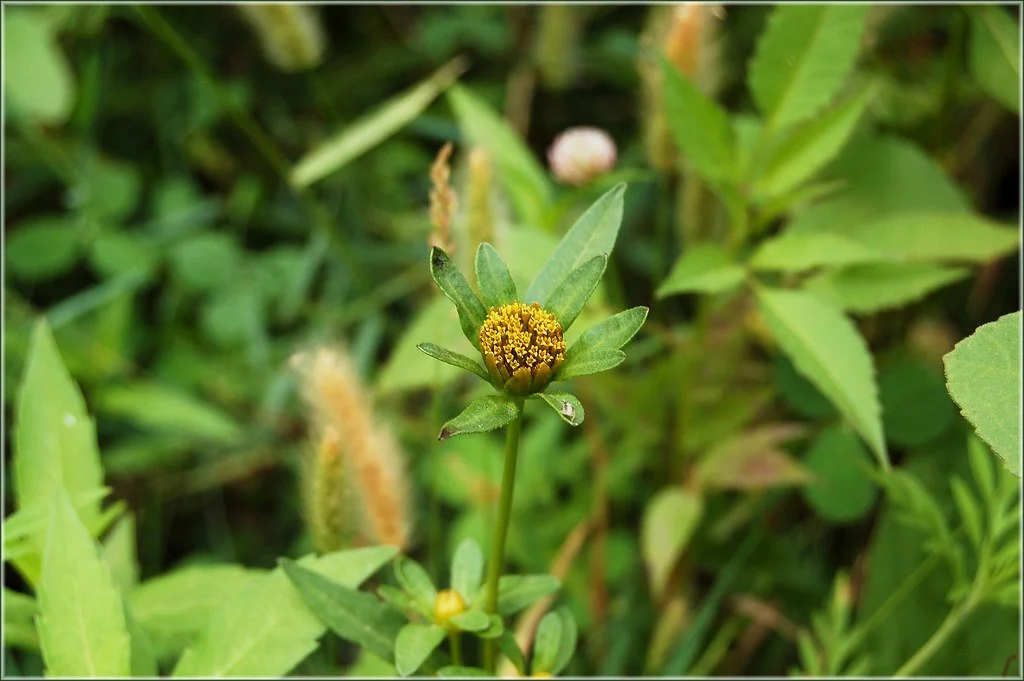Beggartickers
A summer annual that may reach as much as 3 1/2 feet in height. Devils beggarticks has prickly fruit that facilitate seed dispersal by sticking to the fur and clothing of any animal or human that brushes by this weed when mature. Devils beggarticks is primarily a weed of pastures, hay fields, roadsides, landscapes, and nurseries. It is found throughout the United States.
Seedlings
Cotyledons areoblong in outline (up to 25 mm long) and appear to be on petioles. The first true leaves are arranged oppositely along the stem. Subsequent leaves are divided into at least 3 leaflets.
Leaves
Leaves are arranged oppositely along the stem and occur on petioles. Leaves are divided into 3 to 5 leaflets that are lanceolate in outline and have toothed margins. Leaflets may have a few short hairs.
Stems
Erect, branching in the upper portions, reaching as much as 3 1/2 feet in height but more commonly around 12 inches in height.
Flowers
Consist of inner disk flowers that are brownish in color and outer ray flowers that are yellow to orange in color. Flowers are 1 inch in width and are fairly inconspicuous.
Fruit
An achene that ranges from 6 to 12 mm in length and is brown in color. Achenes have 2 distinctive spines with barbs that help the fruit to stick to whatever they come into contact with.
Roots
A taproot.
Identifying Characteristics
Leaves that are divided into 3 to 5 leaflets that are lanceolate and have toothed margins and the distinctive barbed fruit. Devils beggarticks is similar in appearance to Coreopsis Beggarticks (Bidens polylepis) and Spanish Needles (Bidens bipinnata), however both of these weeds have leaves that are dissected into more leaflets than those of devils beggarticks. Additionally, coreopsis beggarticks has flowers that are much larger and more showy than either devil's beggarticks or Spanish needles.

